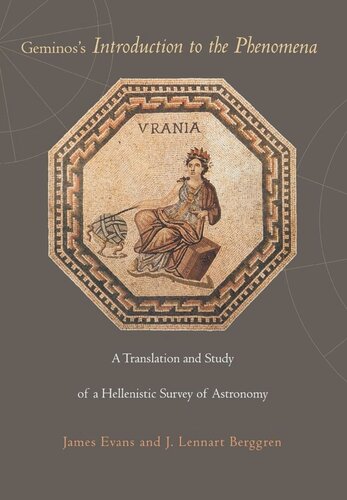

Most ebook files are in PDF format, so you can easily read them using various software such as Foxit Reader or directly on the Google Chrome browser.
Some ebook files are released by publishers in other formats such as .awz, .mobi, .epub, .fb2, etc. You may need to install specific software to read these formats on mobile/PC, such as Calibre.
Please read the tutorial at this link: https://ebookbell.com/faq
We offer FREE conversion to the popular formats you request; however, this may take some time. Therefore, right after payment, please email us, and we will try to provide the service as quickly as possible.
For some exceptional file formats or broken links (if any), please refrain from opening any disputes. Instead, email us first, and we will try to assist within a maximum of 6 hours.
EbookBell Team

0.0
0 reviewsThis is the first complete English translation of Geminos's Introduction to the Phenomena--one of the most important and interesting astronomical works of its type to have survived from Greek antiquity. Gracefully and charmingly written, Geminos's first-century BC textbook for beginning students of astronomy can now be read straight through with understanding and enjoyment by a wider audience than ever before. James Evans and Lennart Berggren's accurate and readable translation is accompanied by a thorough introduction and commentary that set Geminos's work in its historical, scientific, and philosophical context. This book is generously illustrated with diagrams from medieval manuscripts of Geminos's text, as well as drawings and photographs of ancient astronomical instruments. It will be of great interest to students of the history of science, to classicists, and to professional and amateur astronomers who seek to learn more about the origins of their science.
Geminos provides a clear view of Greek astronomy in the period between Hipparchos and Ptolemy, treating such subjects as the zodiac, the constellations, the theory of the celestial sphere, lunar cycles, and eclipses. Most significantly, Geminos gives us the earliest detailed discussion of Babylonian astronomy by a Greek writer, thus offering valuable insight into the cross-cultural transmission of astronomical knowledge in antiquity.